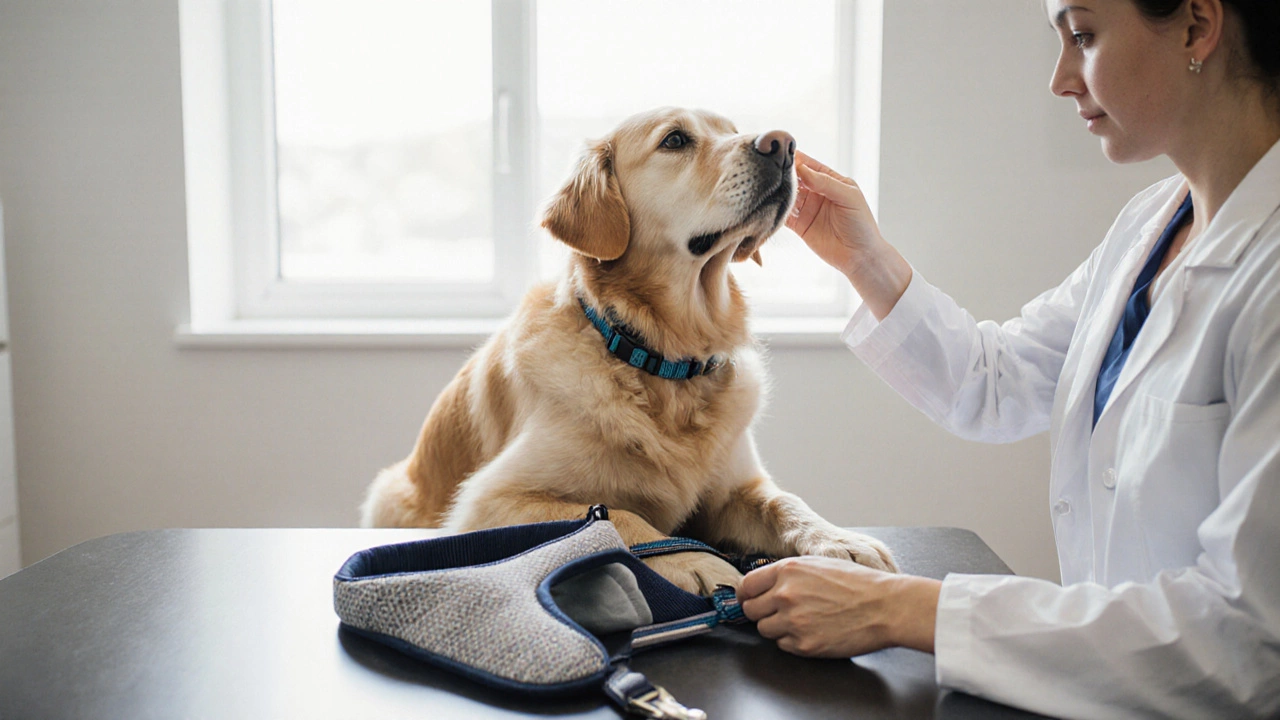Collar vs Harness: Choosing the Right Gear for Your Dog
When you see a collar vs harness, a comparison of two main types of dog restraint equipment that affect comfort, control, and training outcomes. Also known as collar and harness debate, it shapes how owners manage walks, training, and safety.
One of the most common dog collar, a band that fits around the neck and typically attaches a leash or ID tag works by applying pressure directly to the neck. This design is simple, cheap, and works well for well‑behaved dogs that don’t pull. However, a tight collar can strain the trachea, especially on larger breeds or dogs with respiratory issues. In contrast, a dog harness, an outfit that distributes force across the chest and back instead of the neck spreads the load, reducing strain on the throat and spine. Many trainers recommend a harness when dealing with pullers, puppies learning leash etiquette, or dogs with neck injuries.
Key Factors That Influence Your Choice
Understanding how each option works helps you pick the right tool. Collar vs harness decisions often hinge on three attributes: safety, control, and training goals. Safety includes the risk of choking, neck injuries, or skin irritation. Control measures how effectively you can guide the dog without causing discomfort. Training goals range from basic obedience to correcting pulling or redirecting attention. For example, a no‑pull harness, a harness designed with a front‑clip or gentle‑leader style to discourage forward pulling actively redirects the dog's momentum, making it a popular choice for beginners learning leash manners.
Another related tool is the training leash, a short, sturdy leash that gives precise control during obedience work. While a leash is not a replacement for a collar or harness, it pairs with either to enhance training effectiveness. The combination you select can affect how quickly a dog learns "heel," "leave it," or "no pull" commands. In practice, many owners start with a standard flat collar for identification, then add a harness for walks and a training leash for sessions.
Animal behavior experts note that the choice also depends on breed tendencies. Herding breeds, like border collies, often excel with front‑clip harnesses that channel their natural drive. Toy breeds may prefer lightweight collars to avoid bulk. Larger working dogs benefit from padded harnesses that prevent chafing during long hikes. By matching the gear to the dog's physical build and temperament, you reduce the chance of accidental injuries and improve compliance.
Below you’ll find articles that dive into specific scenarios—teaching a puppy "no" without harsh pressure, stopping a dog from pulling, calming anxious pups during grooming, and more. Each piece ties back to the core question of whether a collar or a harness (or a combination) is the smarter choice for your situation. Whether you’re a seasoned rider, a new puppy parent, or a professional groomer, the insights here will help you decide which gear fits best and how to use it effectively.
Ready to explore practical tips, common pitfalls, and product recommendations? Scroll down to see the curated collection of posts that break down the details and give you clear steps to get the most out of your dog’s restraint system.
Veterinarian Advice: Collar vs Harness for Dogs - Which Is Safer?
Find out whether vets favor collars or harnesses, learn the health pros and cons, and get a step‑by‑step guide to fit the right gear for your dog.
